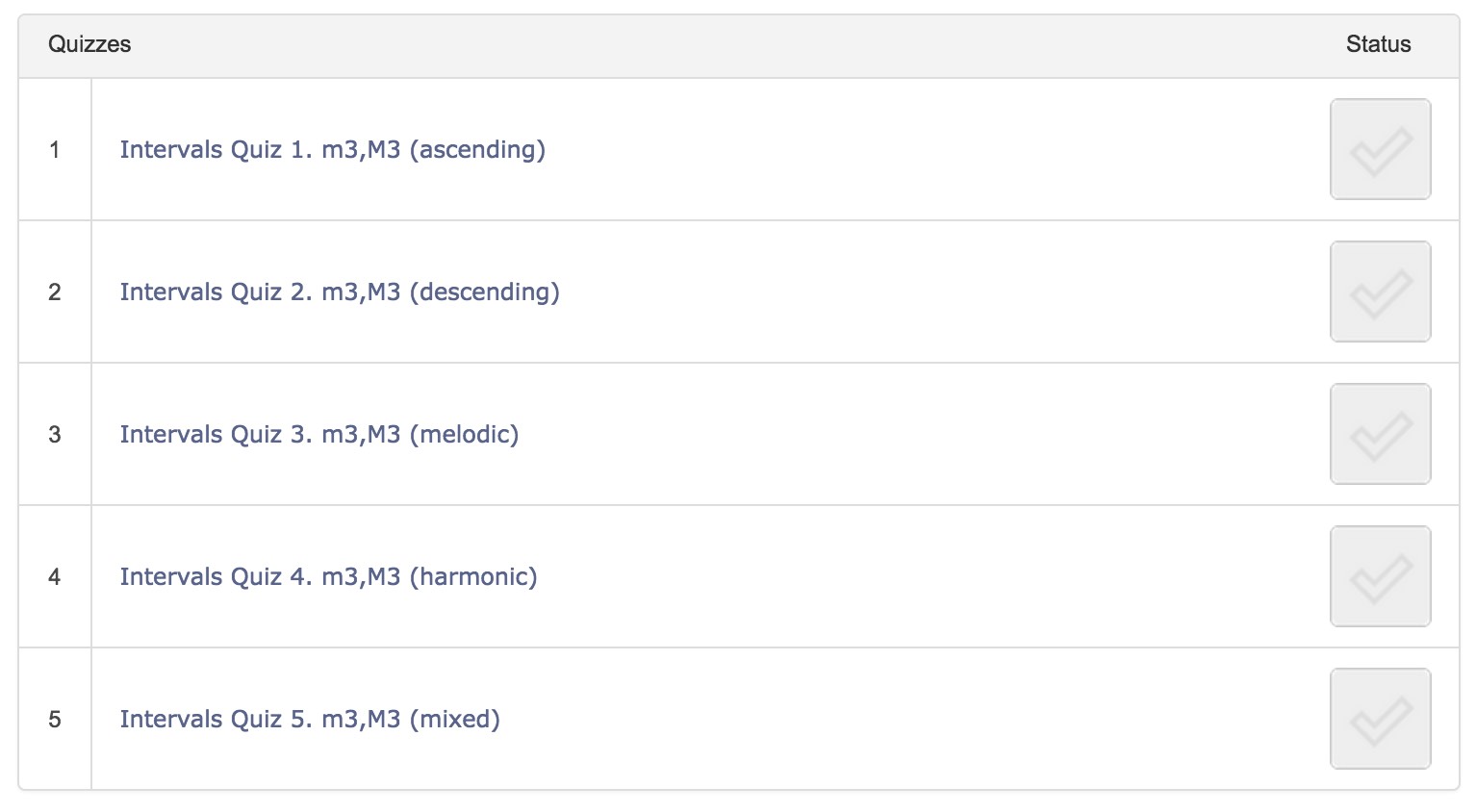
Interval Recognition 1
Practise recognising different types of interval by ear (part one).
After completing this module: you will be able to reliably recognise half the intervals of the octave: unison, major and minor seconds and thirds, and perfect fourths and fifths.
This module has a sequence of lessons with which you will gradually learn to recognise all the intervals of the octave. Because every musician learns differently you should feel free to adjust the lesson order based on your progress learning the intervals.
Module Preview
Contents
- Introduction
- Same or Different?
- Semitone and Tone
- Tone and Octave
- Recap
- Major and Minor Thirds
- Recap
- Fourths and Fifths
- Recap
How It Works
As you will have learned in the Learning Intervals module, each interval comes in three forms:
- Ascending (upwards)
- Descending (downwards)
- Harmonic (both notes together)
It’s generally easiest to start with the ascending form, then add in the descending form, and then finally try the harmonic form.
This module lets you practice the intervals in each of the three forms and also in combinations of the forms: “melodic” includes ascending and descending, and “mixed” includes all three.
In each lesson you’ll find some information about the intervals you’re learning, then some training tracks, some testing tracks, and a set of quizzes.
Step 1: Train
Use the “Training” tracks to listen carefully to each type of interval and tune your ear in to the different sounds.
Each time an interval is played, it is then announced so you know which intervals you’re hearing.
Step 2: Test
Once you think you’re getting a sense of each interval’s sound, listen to the corresponding “Test” tracks, which include a short pause after each interval.
During the pause, try to identify the interval you just heard.
You’ll hear the correct answer so you know if you got it right and have the chance to hear the interval again.
Step 3: Quiz
If you’re getting the answers right while listening to the “Testing” tracks, it’s time to check your abilities by taking the corresponding quiz.
Example Lesson: Major and Minor Thirds
The intervals made up of three or four semitones are called “thirds” and there are two types:
Minor Thirds (3 semitones)
and
Major Thirds (4 semitones)
Major and Minor Thirds strongly affect whether music sounds happy and bright (major), or dark and sad (minor).
These labels, major and minor, can be applied to other intervals too, and you’ll learn some of these in later lessons.
For now try to get used to the difference between major and minor thirds, and how their sounds compare with the other intervals you’ve learned so far.
Training Tracks
Ascending
Descending
Melodic
Harmonic
Mixed
Testing Tracks
Ascending
Descending
Melodic
Harmonic
Mixed
Quizzes

Give it a try!

